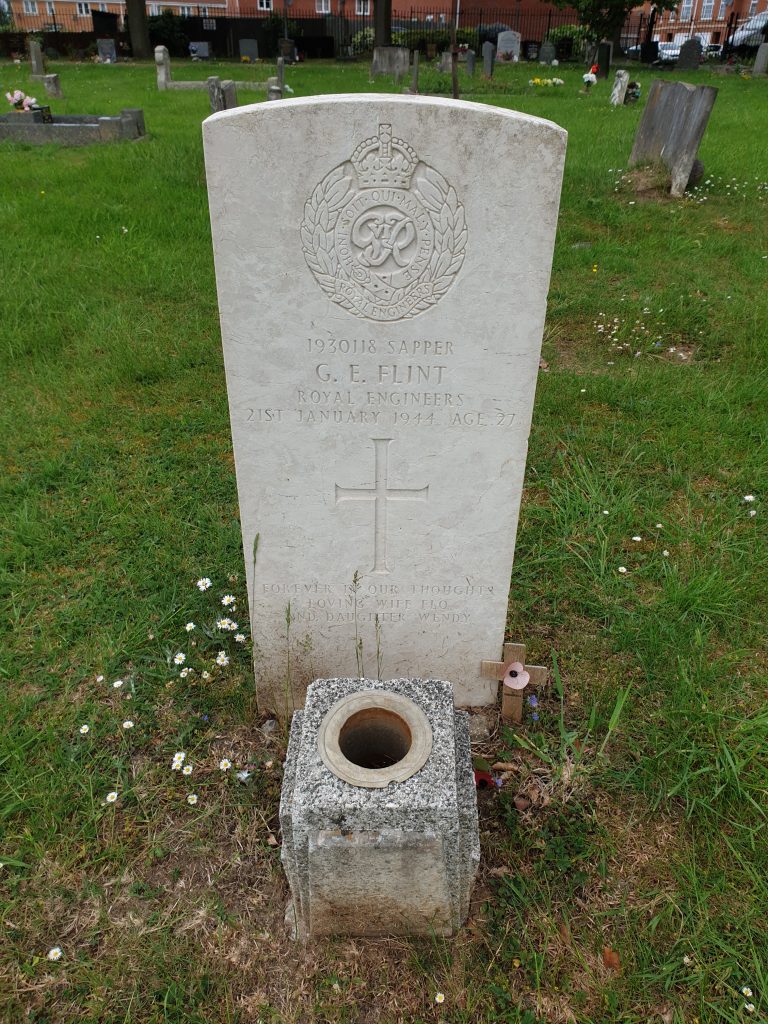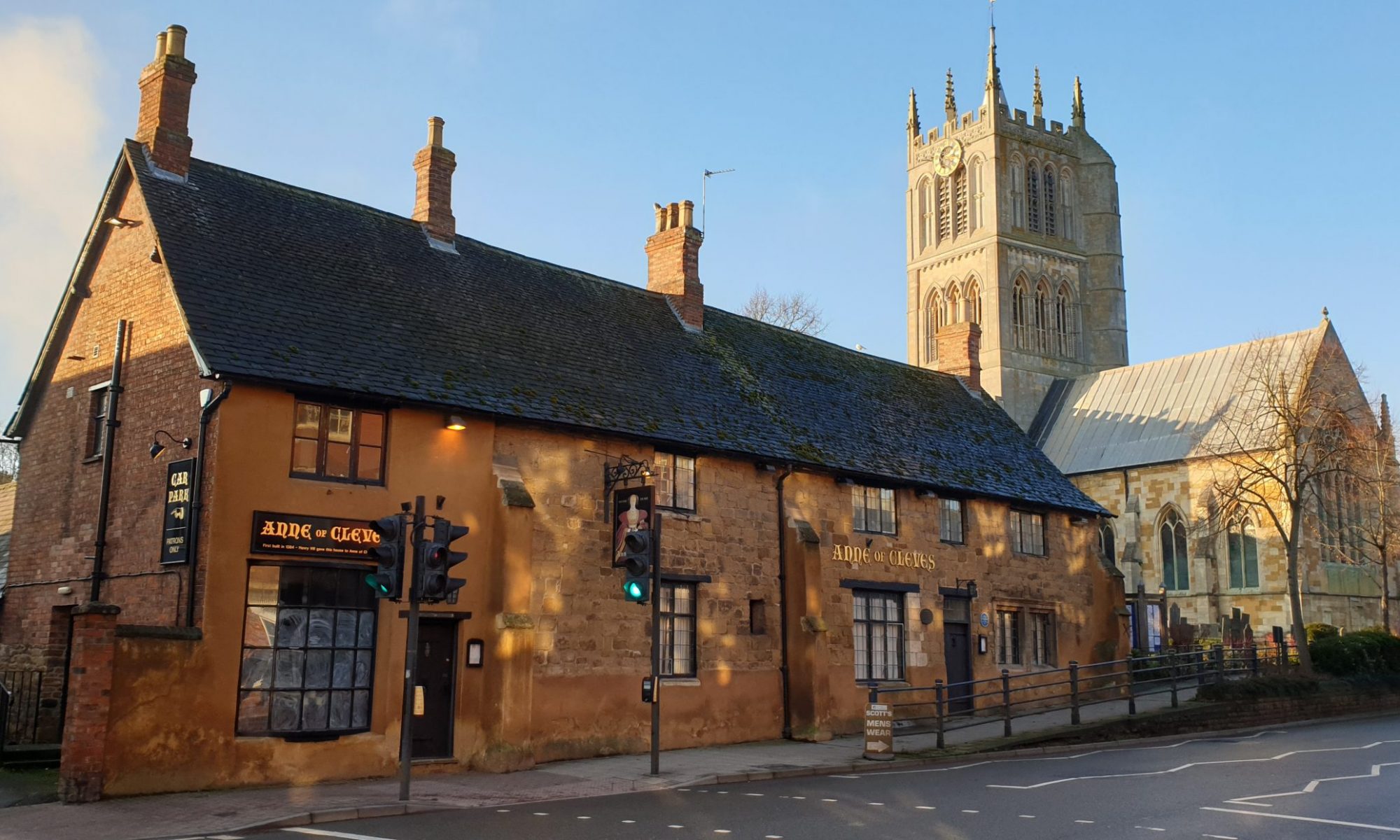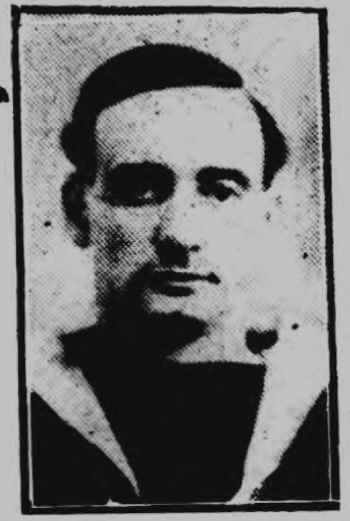
George Edward Flint was born on the 17th August 1888 in Kirby Bellars, Leicestershire. He was the son of James Flint a railway labourer, born 1861 in Frisby on the Wreake, Leicestershire, and his wife Emma Flint (nee Mann, married in the 4th quarter of 1885 in the Melton Mowbray, Leicestershire district), born 1863 in Long Itchington, Warwickshire.

George was educated in the British School, Melton Mowbray and upon leaving school he went to work in the office of Messrs. Sharman and Ladbury for about 12 months, then he started work for the Midland Railway Co as a booking clerk, first stationed at Ashwell then at Luffenham.
George volunteered to enlist in the Royal Navy to serve a 5 + 7 year engagement on the 12th September 1907. His medical examination recorded that he was 5 foot 6¼ inches in height and had a chest measurement of 35 inches, his hair colour was black and he had brown eyes, his complexion was described as fair, it was noted that he had moles on the left side of his chest and on his right forearm, he gave his trade or calling as clerk.
His record of service began when he joined HMS Victory, the accounting and holding Barracks for the Fleet sailing out of Portsmouth on 12th September 1907 as an Ordinary Seaman and he was allocated the service number SS/2110.
He was re-assigned from Victory to HMS Prince George on 30th October 1907 where he stayed until 31st March 1908. Prince George was recommissioned on 5th March 1907 to serve as the flagship of the Commander-in-Chief, Portsmouth Division of the new Home Fleet which had been organised in January 1907. On 5th December 1907 she collided with the armoured cruiser Shannon at Portsmouth, sustaining significant damage to her deck plating and boat davits.
Following his assignment on the Prince George, he was re-assigned to HMS Duke of Edinburgh, joining the ships company on the 1st April 1908. The Duke of Edinburgh was assigned to the 5th Cruiser Squadron from 1906 to 1908 and was then transferred to the 1st Cruiser Squadron of the Channel Fleet. When the Royal Navy’s cruiser squadrons were reorganized in 1909, the Duke of Edinburgh re-joined the 5th Cruiser Squadron of the Atlantic Fleet. Whilst serving with the Duke of Edinburgh, George was promoted to Able Bodied Seaman, staying part of her company until 14th March 1910.
On the 15th March 1910, George was assigned back to HMS Victory at Portsmouth until 31st May 1910.
From the 1st June, he was assigned to HMS Jupiter. Jupiter was the flagship of the Home Fleet Portsmouth Division from February to June 1909 and later second flagship of the 3rd Division. During this service, she underwent refits at Portsmouth in 1909–1910, during which she received fire control equipment for her main battery.
On 26th June 1910, he was allocated a new service number J/8281 and continued his service abord HMS Jupiter until 28th October 1910.
George was assigned to HMS Britannia on 29th October 1910. Britannia was a King Edward VII-class pre-dreadnought battleship, named after the Latin name of Great Britain under Roman rule. The ship was built by Portsmouth Dockyard between 1904 and 1906. Armed with a battery of four 12-inch (305 mm) and four 9.2 in (234 mm) guns,
George’s next assignment commenced on 15th October 1912 to HMS Excellent at the Whale Island Gunnery School where he went to gain experience in gunnery.
Following his successful completion of his gunnery courses, he joined HMS Dreadnought on 1st July 1913. Dreadnought was the battleship that became synonymous with revolutionising naval power due to the advance in naval technology that her name came to be associated with and an entire generation of battleships, the “dreadnoughts” were a class of ships named after her.
Dreadnought became flagship of the 4th Battle Squadron in December 1912 after her transfer from the 1st Battle Squadron, as the 1st Division had been renamed earlier in the year. Between September and December 1913 Dreadnought was training in the Mediterranean Sea.
George was re-assigned from Dreadnought back to HMS Victory I at Portsmouth where he stayed until 28th May 1914.
Following this stint at the shore base Victory, George was next assigned to HMS Psyche on the 29th May 1914. HMS Psyche carried a complement of 224 and was armed with eight QF 4-inch (25 pounder) guns, eight 3 pounder guns, three machine guns, and two 18-inch (450-mm) torpedo tubes. Psyche was part of the Pelorus class ships that displaced 2,135 tons and had a top speed of 20 knots (37 km/h; 23 mph). Most served in minor roles on overseas or colonial patrol work, not with the main battlefleets.
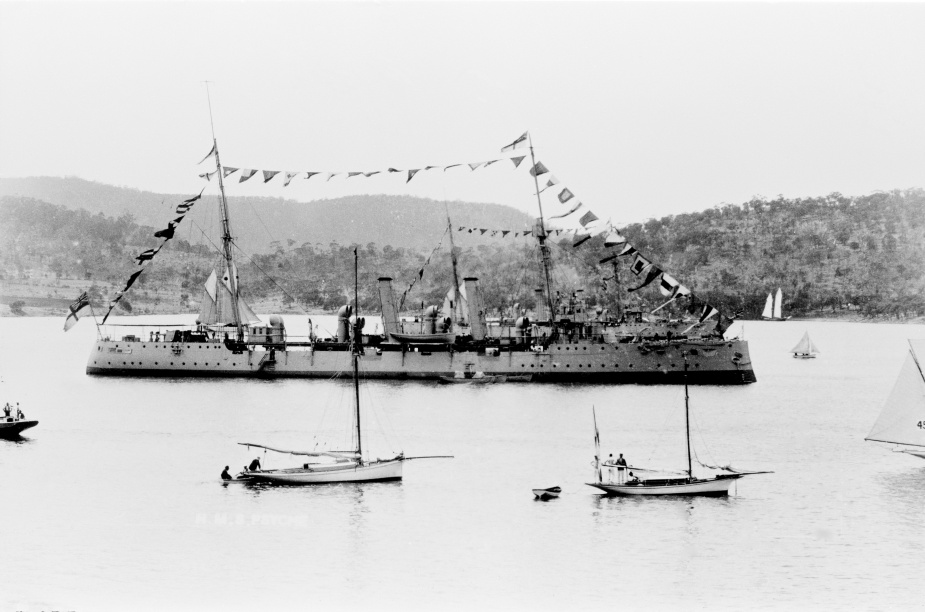
Whilst aboard HMS Psyche, he was despatched to the naval station at New Zealand where he is involved in training the naval men of that colony. When the outbreak of hostilities, the Psyche, along with other British Warships and units of the Japanese Navy were involved in the endeavour to round up the ‘notorious’ German raider, the Emden.
SMS Emden spent most of her career overseas in the German East Asia Squadron, based in Tsingtao, China. At the outbreak of World War I, Emden captured a Russian steamer and converted her into the commerce raider Cormoran. Emden rejoined the East Asia Squadron, then was detached for independent raiding in the Indian Ocean. The cruiser spent nearly two months operating in the region, and captured nearly two dozen ships. On 28 October 1914, Emden launched a surprise attack on Penang; in the resulting Battle of Penang, she sank the Russian cruiser Zhemchug and the French destroyer Mousquet. On 15 August 1914 HMS Psyche, HMS Pyranus and HMNZS Philomel were escorts for the troopships Monowai and Moeraki which had been requisitioned from the Union Steam Ship Company as transports for the Samoan Expeditionary Force which departed Wellington for Apia with 1385 troops. The naval party brought about the surrender of the German occupied Samoan islands.
Two picket boats from Australia swept the channel as a precaution before the transports entered. The Union flag was hoisted at 12.45pm and the landing of the troops commenced at 1.00pm. At 8.00 am on Sunday 30th August the British Flag was hoisted over the Courthouse and a proclamation read by Colonel R. Logan ADC, NZSC, the Officer Commanding the Troops, in the presence of Naval and Military Officers and men, Native Chiefs and the residents of Apia. A salute of 21 guns was fired by Psyche.
The “Auckland Weekly News” published a pictorial about the surrender with Seaman Gunner Flint featuring in several of the images. Flint was one of the boat’s crew that took officers of the Psyche to the landing stage at Apia on August 29th under a white flag, with a despatch to the German governor demanding surrender of the islands. George was also shown in another image where the Union Jack was being hoisted up the flagpole of the Apia Court House on the morning of the 30th.
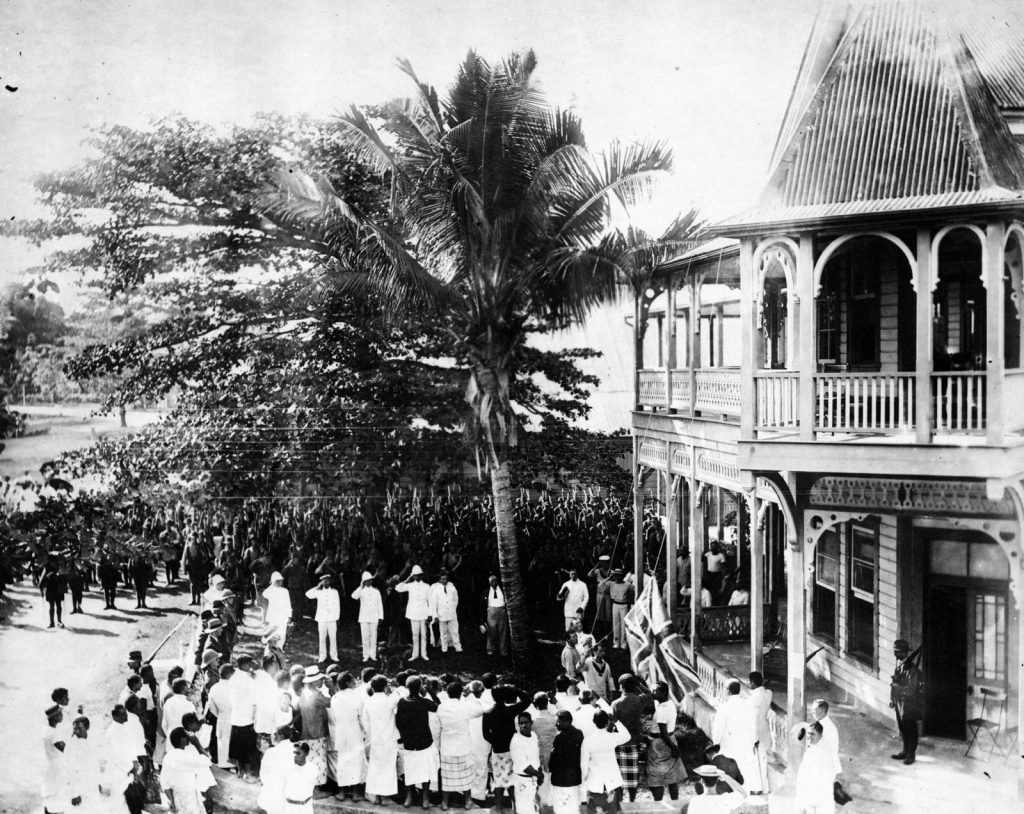
Upon the Psyche along with the Pearl Class cruiser HMNZS Philomel being handed over to the New Zealand Naval Department, the crews were taken by a P&O ship to the Suez where Seaman George Flint joined the company of HMS Swiftsure on the 9th January 1915.
Swiftsure and her crew took part in the defence of the Suez Canal when the Turks had tried to cross it. Following this abortive attempt, George was one of her crew that assisted in the burial of over three hundred Turks.
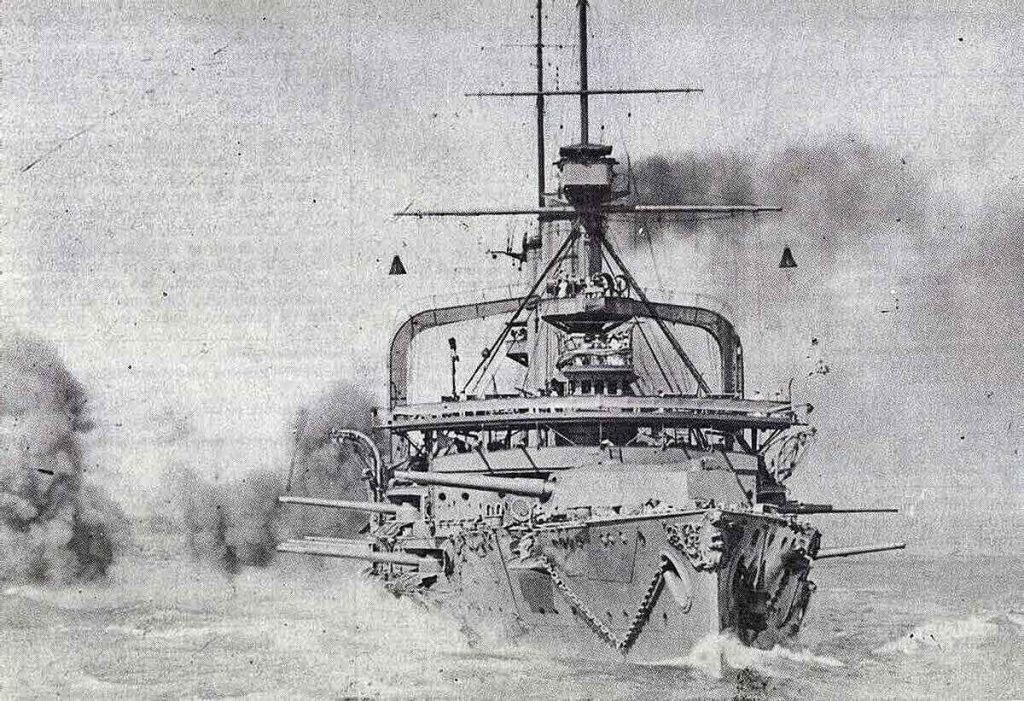
From the Suez, the Swiftsure then moved onto the Gallipoli Peninsua taking part in the landings of British, Australian and New Zealand troops at the now infamous historic ANZAC cove.
The Swiftsure was firing her guns until they were red hot covering the landing troops and when a lot of wounded soldiers trying to land on the beaches were seen in difficulties in the water, George and some of his shipmates left their gun battery to assist them.
George and his shipmates were working up to their necks in the water trying to save the wounded soldiers, resulting in him contracting a sever chill which subsequently turned into pulmonary consumption (tuberculosis).
In spite of falling sick he continued to perform his duties and witnessed the sinking of the Irresistible, Ocean, Triumph, and the French ship Bouvet, his own ship the Swiftsure being only narrowly missed by a torpedo which was fired at it from a submarine.
He was initially transferred to the hospital at Malta, then transferred again to Haslar Hospital in Portsmouth where he stayed until 9th July 1915 when he was invalided from the service.
After being discharged from the Service, he was transferred to the new Leicestershire Sanatorium at Mowsley near Market Harborough. Around the 26th January 1916, he was transferred to his parents home in Melton where he stayed until he passed away peacefully.
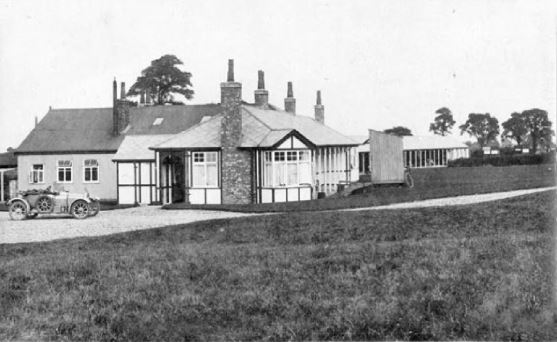
After being discharged from the Service, he was transferred to the new Leicestershire Sanatorium at Mowsley near Market Harborough which had recently been built during 1914-15 to hold fifty patients suffering from tuberculosis.
Around the 26th January 1916, he was transferred to his parents home in Melton where he stayed until he passed away peacefully.
His funeral took place on Saturday 12th February 1916 where the inhabitants of Melton Mowbray turned out in thousands last Saturday afternoon to pay homage to a local sailor who had given up his life in the service of his country.
Owing to the absence of Bluejackets in the Melton neighbourhood, Mr. A. E. Mackley, one of the local civilian recruiting sergeants made the necessary arrangements for full military honours to be accorded.
By the kindness of Colonel R. S. Goward, the services of the band of the 3/5th Leicestershire Regiment were secured and the bearers, a firing party, and a bugler were supplied from the Wigston Barracks – the Headquarters of the Leicestershire Regiment.
The Melton St. John Voluntary Aid Detachment under the command of Captain S. C. Hobson, also attended, as did likewise a contingent of 16 men from the Melton Farriery School under Sergt. T. Bugg, of the Duke of Wellington’s.
A few men were drawn from each Corps to represent the R.F.A., R.G.A., A.S.C., R.E., and Infantry. Lieut. Paget attended as representing the Leicestershire Yeomanry, and Sergt. Biddle, from the local recruiting office, was in charge of the bearers, the firing party being under Sergt. Grant.
The coffin was placed on an open hearse, and was covered with the Union Jack, on top of which deceased’s white naval cap was deposited. The body was taken to the Congregational Church, where the first portion of the service was read, the Rev. E. Williams officiating.
There was a crowded congregation amongst whom were noticed Mr. Josiah Gill, J.P., and Dr. Hugh Atkinson. The service was choral, the hymn “Nearer my God to Thee,” being feelingly sung, and Mr. Riley Brown, who officiated at the organ played suitable voluntaries. As the cortege wended its way from the Church to the Thorpe-road cemetery the band played the Dead March in “Saul.”
The streets were lined with spectators, and an enormous crowd assembled at the cemetery. After the coffin had been lowered into the grave the firing party fired three volley’s, and the bugler sounded the Last Post.
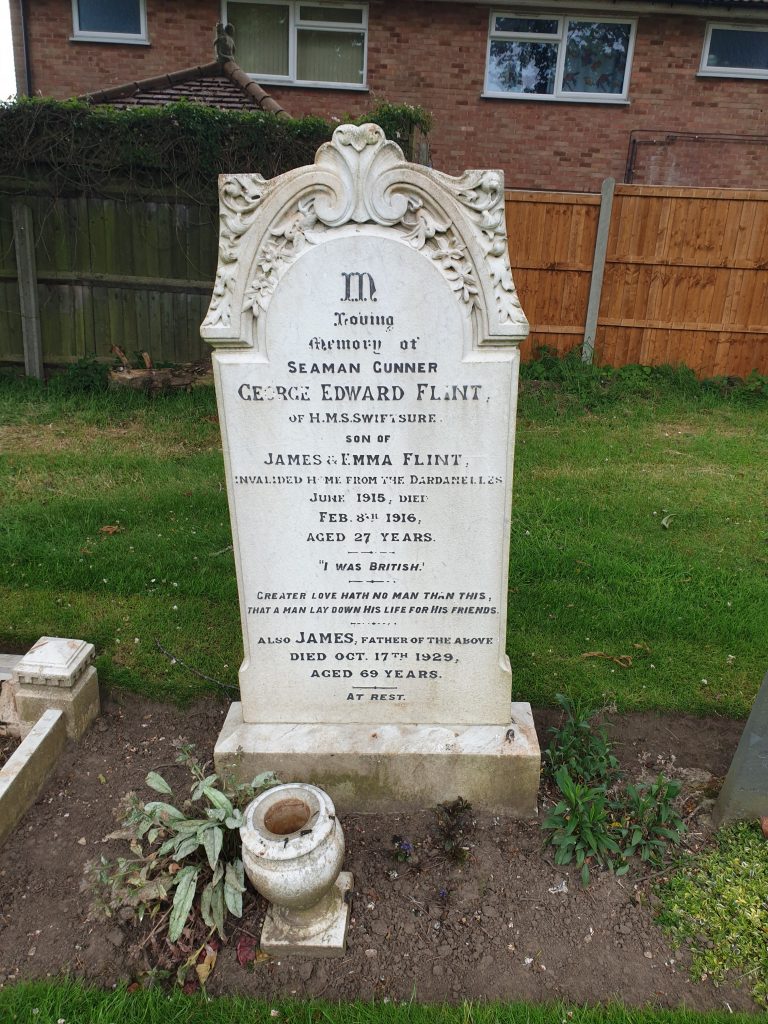
George is buried in Section J, Grave Reference 2120 at Thorpe Road Cemetery, Melton Mowbray. Even though this is a CWGC grave, the family chose to erect their own memorial in place of the CWGC headstone. The Commonwealth War Graves Commission Casualty Record can be seen here.
In 1913, Georges brother David James Flint married Sarah A Gunby and on the 19th May 1917, they had a son and named him George Edward Flint. When the 1939 register was taken, George was living at 22 Snow Hill with his parents and his brother Arthur. George was listed as a bricklayer, the same as his father David, and Arthur as an Apprentice Joiner.
In 1940, George married Florence A Woolley and in 1942 they had a daughter Margaret. At some point after 1939, George enlisted in the army serving as a Sapper in the Royal Engineers. George died on 21 January 1944 and is also buried in Thorpe Road Cemetery, Melton Mowbray. The Commonwealth War Graves Commission Casualty Record can be seen here.
